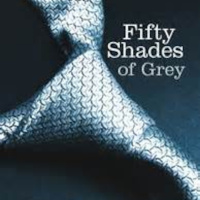Sinopsis
The Royal Academy of Arts is a place where art is made, exhibited and debated.
Episodios
-
International Architects Series: Barozzi Veiga
21/11/2017 Duración: 01h02minHear from celebrated Spanish-Italian architects Barozzi Veiga as they discuss some of their recent projects. Known for its sophisticated, sensitive approach and spatial quietude, the practice has won numerous national and international competitions. In 2015, they were shortlisted for the project to redevelop King’s College’s Strand site in London.
-
The erotic dimension of architecture
21/11/2017 Duración: 01h32minIn this discussion, we explore how sensuality, sexuality and voyeurism have been a source of inspiration in architecture – from tactile, sensual interiors to sinuous shapes of buildings. Our panel: Nigel Coates – architect and designer; author of 'Ecstacity at the Architecture Association' (1992), 'Mixtacity' at Tate Modern (2007), 'Hypnerotosphere' at the 2008 Venice Architecture Biennale, and 'Picaresque' at the Triennale Design Museum (2012) Rosa Ferré – Head of Exhibitions, CCCB; curator of '1000m2 of Desire' Penelope Haralambidou – Acting Director, MPhil/PhD Architectural Design at The Bartlett School of Architecture; author of 'Marcel Duchamp and the Architecture of Desire' Gonzalo Herrero Delicado (chair) – Architecture Programme Curator at the RA
-
How much context and knowledge do you need to enjoy art?
21/11/2017 Duración: 01h23minTaking our current Jasper Johns exhibition as a starting point, this discussion explores the question of how we view and interpret art more widely. Where a work of art has a narrative, would our experience of it be enhanced by having more knowledge, or are our senses enough? Where art is explained, who is the author of that interpretation and how are they directing us in how we view art? Is it the role of the artist to explain their work? Our panel: Cathie Pilkington, artist Gill Hart, Head of Education at the National Gallery Kirsteen McSwein, Curator, Interpretation at Tate (chair) Dr David Dibosa, reader in Museology at UAL
-
What is a home without a house?
26/10/2017 Duración: 01h29minIn this panel discussion we explore how the concept of home and domesticity is becoming disconnected from the traditional understanding of a house. How has the meaning of home changed in today’s mobile society? What constitutes home for those who have had to forcedly abandon or voluntarily leave their houses? Are temporary structures an appropriate architectural response? And how is domesticity determined by temporality, sensory experience, personal affection, collective memory, and social networks? Speakers: Robert Mull – Head of the School of Architecture and Design at the University of Brighton; curator of multiple shows on the Calais Jungle Mike Seal – Reader in Critical Pedagogy, Newman University, Birmingham; editor of 'Understanding and Responding to Homeless Experiences, Identities and Cultures' Helen Taylor – writer, researcher and lecturer on refugees and migration; author of 'Refugees and the Meaning of Home: Cypriot Narratives of Loss, Longing and Daily Life in London' Victor Buchli (chair) – P
-
An introduction to the wildlife art of Charles Tunnicliffe
26/10/2017 Duración: 01h05minProfessor Robert Meyrick, Head of the School of Art at Aberystwyth University, introduces our exhibition on the work of Charles Tunnicliffe, Britain’s foremost 20th-century wildlife artist. Please note this exhibition has now ended, but you can see more about the show and Charles Tunnicliffe here: roy.ac/tunnicliffe
-
A discussion on cultural appropriation in the arts
26/10/2017 Duración: 01h19minArtists Yinka Shonibare RA and WESSIELING join ‘Matisse in the Studio’ co-curator Ellen McBreen to examine the ethical and artistic considerations of cultural appropriation within the arts, in a discussion chaired by writer and broadcaster Bidisha.
-
Matisse's portraits: a talk with co-curator Ellen McBreen
26/10/2017 Duración: 43min“A portrait,” Matisse said, “is a quarrel.” His long, laborious studio sessions were intense sites of contestation between physical resemblance and what Matisse understood to be the more lasting, essential character of the person he was portraying. Such sessions frequently resulted in portraits that did not please their subjects. Art historian and co-curator of 'Matisse in the Studio', Ellen McBreen explores how specific objects from the artist's personal collection – a Yoruba mask, a Buddha bust, and a medieval head – provided alternative models for the visual expression of individuality and identity. roy.ac/matisse
-
An introduction to our Dalí / Duchamp exhibition with co-curator Dawn Ades
26/10/2017 Duración: 59minIndependent art historian and exhibition co-curator Professor Dawn Ades introduces our exhibition, exploring Dalí and Duchamp's unexpected friendship and their shared interests and attitudes to art and life.
-
Aino Aalto: forgotten master of architecture
26/10/2017 Duración: 01h25minNamed by some as one of the greatest omissions of design history, Aino Marsio-Aalto belongs to a line of women architects whose work has become overshadowed by that of their better-known male partners. Our panel discuss her often overlooked contribution to Nordic Modernist architecture. On the panel: Summer Islam – architect working for 6a architects; graduated from the Architectural Association; teaches a design studio for the MA in Architecture at the London Metropolitan University Aino Niskanen – Professor of History of Architecture, Aalto University, Finland Judi Loach – architectural and cultural historian, Professor in Early Modern and Modern European Cultural History, Cardiff University; Chair of Docomomo UK
-
Domestic desires: how has modern media shaped our homes?
26/10/2017 Duración: 01h32minFrom Elle Décor to Changing Rooms and Pinterest, the often consumerist agendas of trade shows, television, advertising and social media have always shaped our domestic spaces. This panel is Deborah Chambers – Professor of Media and Cultural Studies at Newcastle University, Emily Rees – PhD student studying the television set in postwar Britain, Deborah Sugg Ryan – Professor of Design History and Theory, University of Portsmouth, and Penny Sparke – Director of Kingston University's Modern Interiors Research Centre.
-
Painters Brice Marden and Gary Hume in conversation
26/10/2017 Duración: 01h06minThe two major artists discuss their approach to painting, their inspiration and the continuing evolution of their work, in a conversation chaired by our Artistic Director, Tim Marlow.
-
Introduction to Jasper Johns: ‘Something Resembling Truth’
10/10/2017 Duración: 55minEdith Devaney, co-curator of Jasper Johns: ‘Something Resembling Truth’ introduces the exhibition and highlights how Johns's work can awaken the senses and reveal new ways of seeing art. roy.ac/jasperjohns
-
Artwork in focus: The Seasons by Jasper Johns
10/10/2017 Duración: 59minThe four paintings known collectively as The Seasons (1985-86) stand at the mid-point of Jasper Johns’s 60-year career, presenting a retrospective of Johns’s artistic and personal life. The paintings are among his most revealing works, serving as an allegory of the four seasons of the year and the four stages of Johns's life. Roberta Bernstein, co-curator of the RA's current Jasper Johns exhibition, tells us more. roy.ac/jasperjohns
-
How can performance art be collected, preserved, displayed and sold?
21/08/2017 Duración: 01h10minArtists Brian Catling RA and Pablo Bronstein join Tate Senior Curator Catherine Wood and Dr Jen Harvie to explore the evolution of performance art in museums and its entrance into the contemporary art market.
-
Daniel Buren's new installation at Tottenham Court Road station
21/08/2017 Duración: 01h06minHave you seen the monochrome stripes and brightly coloured shapes of Daniel Buren's 'Diamonds and Circles, works in situ', at Tottenham Court Road station? Here, the artist discusses his practice and the significance of intervening in public space with the RA's Artistic Director, Tim Marlow.
-
How do art and architecture shape the politics of memory around conflict?
24/07/2017 Duración: 01h14minArtist Miroslaw Balka and architectural historian Joseph Rykwert discuss the concepts of memory and conflict, and how these are explored in contemporary art and architecture from UK to Poland – the birthplace of both speakers. Conflict leaves a mark upon cities, societies and culture that endures not only in the sensibilities of the generations living it, but also in the identities of those that follow. In the aftermath, memories of conflict continue to have great impact, frequently creating greater political awareness and engagement. Culture reflects the values of a society and conflict has historically had a strong influence on art and architecture. In fact, it can often be the motivation behind speculative new ideas, while also providing a platform for reflection, recalling history and leaving a legacy to future generations. Architecture and art have played an important role in shaping the politics of memory around violent conflicts, defining the way they are later remembered. This talk follows on from a
-
Pin Drop Short Story Award with Penelope Wilton
24/07/2017 Duración: 49minHear Cherise Saywell's winning story read aloud to a live audience by actress Dame Penelope Wilton, followed by a discussion of the work with the author. The RA and Pin Drop’s short story award offers a unique platform for emerging and established writers to showcase their short stories. The judging panel includes Pin Drop co-founders Elizabeth Day and Simon Oldfield, and the RA’s Artistic Director, Tim Marlow.
-
Exploring London's identity as a global city today
17/07/2017 Duración: 01h29minLike many of its counterparts, London is in a continuous cycle of change. The economic interests of financial corporations, the growth of the tourist industry, migration and the consequences of Brexit all have an impact on London’s urban environment and thus its identity. In this context, architecture becomes an important currency for maintaining London’s profile as a global capital. How then is the architectural language of London evolving? What makes its architecture distinctive from Shanghai, New York, Dubai and other global capitals? Is the identity of London under threat as a result of globalisation? What does all this mean for its citizens?
-
How can art define a sense of national identity?
17/07/2017 Duración: 01h07minIn the midst of Brexit and in an age of political upheaval in the UK and abroad, how are ideas about national identity portrayed through art? How can art and spaces for art can define national identity? What is the role of the wider art community in defining national identity? Our discussion begins post-Wall Street Crash with the government's Works Progress Administration (WPA) programme, which aimed to generate art that re-examined American culture and values and define a new national identity. Using this as a catalyst for our conversation, we refocus our discussion on the contemporary UK art world, looking at how artists today are responding to times of national crisis. What is the role of the art community in forming ideas around what it means to be British today?
-
Owen Hopkins discusses his book 'Lost Futures: The Disappearing Architecture of Post-War Britain'
17/07/2017 Duración: 01h05minAuthor Owen Hopkins discusses his latest book with ‘Icon’ editor John Jervis. 'Lost Futures: The Disappearing Architecture of Post-War Britain explores the rise and fall of buildings constructed in Britain between 1945 and 1979 that reflected the deep-rooted belief in architecture’s capacity to build a better world. The book highlights the ideas and values that shaped these buildings’ creation – and how changing external contexts, whether social, economic or political, as well as the buildings’ own internal characteristics, played a part in the subsequent demise and destruction of these "concrete monstrosities".














